 The Editors' Guide to Writing for MDL
The Editors' Guide to Writing for MDL

"History shows us a window into our past. Historical fiction can take us by the hand and lead us into that world."
―Judith Geary―

History ― the study of the past that spawns variant interpretations of civilizations, cultures and of life itself ― has made it possible for humans to undergo evolution, (or rather, transmogrification) and even explore new worlds, all thanks to their ancestors who took a leap of faith, successfully creating a world that is unparalleled and still continues evolve and astound everyone.
Korea is a country with many stories, narrating the tales of rulers, warriors, scholars, artists and freedom fighters, who contributed in weaving the rich tapestry of cultural heritage and historical significance that is rooted deeply in the country today.
As someone who completes hour-long sageuk episodes in two hours due to extensive Googling, I thought it would be interesting to write about some of the most important people in Korea's history and their on-screen portrayals. I made sure to take into consideration the fact that characters are dramatized to aptly fit into a drama/movie's unfolding narrative.
Therefore, without further ado, let us dive deep into the sea of time, and let the waves of history carry us back to when life was simpler and yet more difficult when untarnished loyalties were tested, and nations were formed on the shoulders of brave men and women.
세종대왕 / King Sejong 'The Great' ( 1397-1450 / R. 1418-1450 )
It would hardly be fair to start the article without mentioning one of the only two Korean rulers honoured with the appellation 'The Great'. Born as Lee Do, the third son to King Taejong and Queen Consort Min, he adopted the title of Grand Prince Chungnyeong at age 12.
Prince Chungmyeong was 21 years old when he ascended to the throne in 1418, taking the title of King Sejong. Regarded as a sage king, he was respected and famous far and wide. A staunch follower of Confucianism, he made many impressive accomplishments in all areas, including politics, economics, culture and defense during his reign. The basis of his rule was his love and sympathy for ordinary people.
Of his many achievements, perhaps the most notable was the invention of the Korean alphabet Hangul in 1443. King Sejong created the Hunminjeongeum (훈민정음), which is a document that describes an original and native script of the Korean language. To this day, the Korean alphabet is the only alphabet in the world of which the inventor, principles of invention, and dates of promulgation are known. King Sejong remains as one of the greatest kings throughout history.
In Popular Culture/ On Screen Portrayals

King Sejong has made numerous appearances throughout various media, in literature, movies, dramas and video games. Sejong the Great is one of the six linguistic scholars depicted as a portrait in national currency. He is one of those people whose lives have been heavily documented and adapted for later generations to become familiar with.
- Portrayed by Han In Soo in the drama 500 Years of Sejo
 ng: Tree with Deep Roots. (1983)
ng: Tree with Deep Roots. (1983) - Portrayed by Song Jae Ho in the drama King and Rain. (1998-2000)
- Portrayed by Kim Sang Kyung in the dramas King Sejong The Great (2008) and Jang Young Sil (2016)
- Portrayed by Ahn Sung Ki in the film The Divine Weapon (2008)
- Portrayed by Ju Ji Hoon in the film I Am The King (2012)
Han Suk Kyu and Song Joong Ki in Deep Rooted Tree (2011)

Taking its name from the poem Yongbieocheonga that says that trees with deep roots do not sway, the ― relatively historically accurate ― drama tells the story of a royal guard investigating a case involving the serial murders of The Hall of Worthies in Gyeongbok Palace while King Sejong comes to create the Korean written language.
Song Joong Ki plays the role of teenage King Sejong, a young man with great internal conflict, who early on in his reign accidentally causes the deaths of his in-laws and their slaves in an attempt to save them from his tyrannical father, King Taejong.
Han Suk Kyu portrays the role of King Sejong in his prime, as a resolute and unwavering man, striving to achieve his mission of creating the Korean Alphabet (Hangul) aided by So Yi and Chaeyoon, two slaves who managed to escape with their lives intact from King Taejong's tyranny.

Yoon Doo Joon in Splash Splash Love (2015)

Splash Splash Love is a two-episode story of Dan Bi, a high school student with an irrational fear of mathematics who, in order to escape from taking the CSAT, mysteriously travels through a time portal to the Joseon era. There, she is mistaken as a eunuch and made to serve King Lee Do (Sejong). 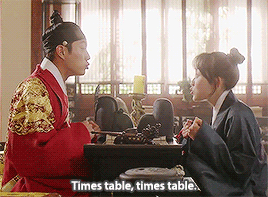 The events that follow are historically relevant to some extent (like the inventions of that era), while the majority of the drama special is fictional.
The events that follow are historically relevant to some extent (like the inventions of that era), while the majority of the drama special is fictional.
Yoon Doo Joon portrays King Sejong, a young, intelligent man, with a cheerful disposition and a thirst for knowledge. He actively participates in matters of the state and is portrayed as someone who is way ahead of his times, as seen when he makes conscious efforts to understand Dan Bi and her "modern gadget" (cellphone).

선덕여왕 / Queen Seon Deok of Silla (595-647) (R. 632-647)

Queen Seondeok reigned as Queen Regnant of Silla, one of the Three Kingdoms of Korea, from 632 to 647. She was Silla's twenty-seventh ruler and its first reigning queen. She was the second female sovereign in recorded East Asian history. She ruled the kingdom of Silla for 15 years after her father died and passed the throne on to her.
She inherited the throne during the Three Kingdom period, a time of turbulence and war, and yet, she held the kingdom together. She even created a stronger alliance with the Tang Dynasty.
Queen Seondeok was known to be an intelligent and competent ruler, who encouraged a renaissance in thought, literature, and the arts in Silla. In Samguksagi (Historical record of the Three Kingdoms: Goguryeo, Baekje, and Silla), Queen Seondeok was described as "generous, benevolent, wise, and smart".
Her reign opened the door for other queens including her successor and cousin, Queen Jindeok, (who also had a successful reign as queen).
In Popular Culture/ On Screen Portrayals
Queen Seon Deok has also been portrayed across various media like dramas, films, video games and literature. Her story intertwined with The Legend of Jigwi (a man who is said to have fallen in love with Queen Seon Deok, after witnessing her beauty) has been immortalized forever with several renditions to the tale.
is said to have fallen in love with Queen Seon Deok, after witnessing her beauty) has been immortalized forever with several renditions to the tale.
- Portrayed by Lee Hyun Jung in the drama Yeon Gaesomun. (2006-2007)
- Portrayed by Park Joo Mi, Sun Joo Ah and Hong Eun Hee in the drama The King's Dream. (2012-2013)
- She is the leader of the Korean civilization in the Civilization VI: Rise and Fall.
Nam Ji Hyun and Lee Yo Won in Queen Seon Deok (2009)

The drama follows the story of Princess Deokman who was born as one of the twin daughters of King Jinpyeong and Queen Maya, but due to a prophecy, King Jinpyeong had to send his daughter away from the palace with the help of his loyal servant Seohwa. She raised Deokman as if she were her own, but a turn of events eventually led Deokman into finding out her real identity. In order to save the throne from Mishil's (her father's concubine) Deokman sets out to battle but has to face the terrible loss of her twin sister Cheonmyeon, who ended up losing her life while trying to help Deokman escape. Out of hatred, Deokman vows to take back what was taken from her and avenge her sister by bringing Mishil down and becoming the first female king of Silla.
The drama can be effectively divided into two parts: the first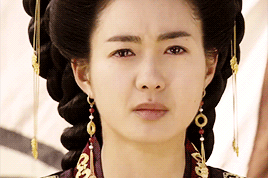 with young Princess Deokman (portrayed by Nam Ji Hyun) a carefree and cheerful girl, living a simple life away from all the commotion and palace politics, unaware of her identity and true calling, and the second with adult Princess Deokman (portrayed by Lee Yo Won) who has realized her mission in life and is willing to fight tooth and nail come what may, in order to restore peace to her kingdom and to punish the usurper Mishil.
with young Princess Deokman (portrayed by Nam Ji Hyun) a carefree and cheerful girl, living a simple life away from all the commotion and palace politics, unaware of her identity and true calling, and the second with adult Princess Deokman (portrayed by Lee Yo Won) who has realized her mission in life and is willing to fight tooth and nail come what may, in order to restore peace to her kingdom and to punish the usurper Mishil.

허준 / Heo Jun (1539-1615)
Heo Jun was a court physician of the Yangcheon Heo clan during the  reign of King Seonjo of the Joseon Dynasty. He was appointed as a court physician at the age of 29. He wrote a number of medical texts, but his most significant achievement is Dongui Bogam ("Mirror of Eastern Medicine"), which is often noted as the defining text of traditional Korean medicine. The work spread to East Asian countries like China, Japan, and Vietnam where it is still regarded as one of the classics of Oriental medicine today.
reign of King Seonjo of the Joseon Dynasty. He was appointed as a court physician at the age of 29. He wrote a number of medical texts, but his most significant achievement is Dongui Bogam ("Mirror of Eastern Medicine"), which is often noted as the defining text of traditional Korean medicine. The work spread to East Asian countries like China, Japan, and Vietnam where it is still regarded as one of the classics of Oriental medicine today.
Although Heo Jun worked extensively with the royal family, he put a great emphasis on making treatment methods accessible and comprehensible to common people. Whereas common medical practice was to use rare and expensive ingredients for treatment, he instead found natural herbal remedies that were easily attainable by commoners in Korea and that were just as effective.
Heo Jun's name and accomplishments are widely recognized by people even today. Korean people still refer to Heo Jun's natural remedies found in his Dongui Bogam.
In Popular Culture/ On Screen Portrayals
Heo Jun's life has been portrayed in various film and TV adaptations, as well as in literature. The 1990 novel Dongui Bogam (with the same name as Heo Jun's own book) by Lee Eunseong became a bestseller upon its release. A municipal museum in Seoul was inaugurated in 2005 to commemorate his legacy and contributions to Korean society.
- Portrayed by Kim Mu Saeng in the drama Jibnyeom. (1975)
- Portrayed by Lee Soon Jae in the film Concentration. (197)
- Portrayed by Seo In Seok in the drama Dongui Bogam. (1991)
- Portrayed by Jun Kwang Ryul in the drama Hur Jun. (1999-2000)
- Portrayed by Uhm Hyo Sup in the drama Live Up to Your Name, Dr. Heo. (2017)
Kim Joo Hyuk in Hur Jun: The Original Story (2013)

The drama follows the trials, tribulations and triumphs of Heo Jun as he sets out to change his destiny from humble beginnings to the position of the Court Physician, and the kindred people he comes to confide in along the way.
Kim Joo Hyuk portrays the character of Heo Jun, the son of a concubine and the governor of Yeongcheon (a city in the Northern province of South Korea). When he witnesses brilliant doctor Yoo Ui Tae save a dying person, he decides to become a doctor too. His determination and resolve can be easily deduced from the journey he embarks on to achieve that purpose.
Heo Jun goes from a medicinal herb gatherer to an assistant, to an apprentice, and finally to the position of a doctor, while under the tutelage of Yoo Ui Tae. Constantly of the desire to improve his abilities and quench his thirst for knowledge, he studies rare medical texts imported from the Ming dynasty which are difficult to obtain. Despite the era's oppressive caste system and his commoner background, Heo Jun rises to the top of his field and becomes King Seonjo's royal physician.
Yoon Shi Yoon in Mirror of the Witch (2016)

The drama follows the story of Princess Yeon Hee, who was abandoned after birth, by her mother Queen Shim due to the curse that was placed upon her by a shaman named Haeran, after she learnt of the Queen's plan to kill her. With the help of Shaman Choi Hyu Soo, Yeon Hee (now named as Seo Ri) grows up as a beautiful young girl, but she is forced to remain isolated and away from everyone, living in a house surrounded by talismans. A young scholar named Heo Jun (Yoon Shi Yoon), the son of a slave and a rich master, has a chance encounter with Yeon Hee and he ties their fate as they journey together to lift the princess' curse which causes everyone she loves to die an awful death.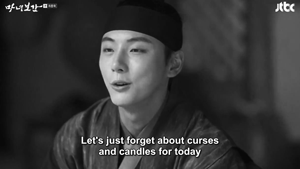
Yoon Shi Yoon turns in a solid performance as young Heo Jun, a street-smart, playful, and adventurous man, whose only source of income is to con people with counterfeit yet safe medicine in order to make ends meet. After making a bet with a nobleman about venturing into the mystical forest where wild beasts lurk, he encounters Seo Ri and vows to change his destiny along with her hers, by becoming a successful physician.
This drama is a complete work of fiction. Elements from actual history have been incorporated to a very little extent. In a nutshell, this drama presents the contrast between the extent of human reason and logic and the invincibility of dark and mystical forces reigning supreme.
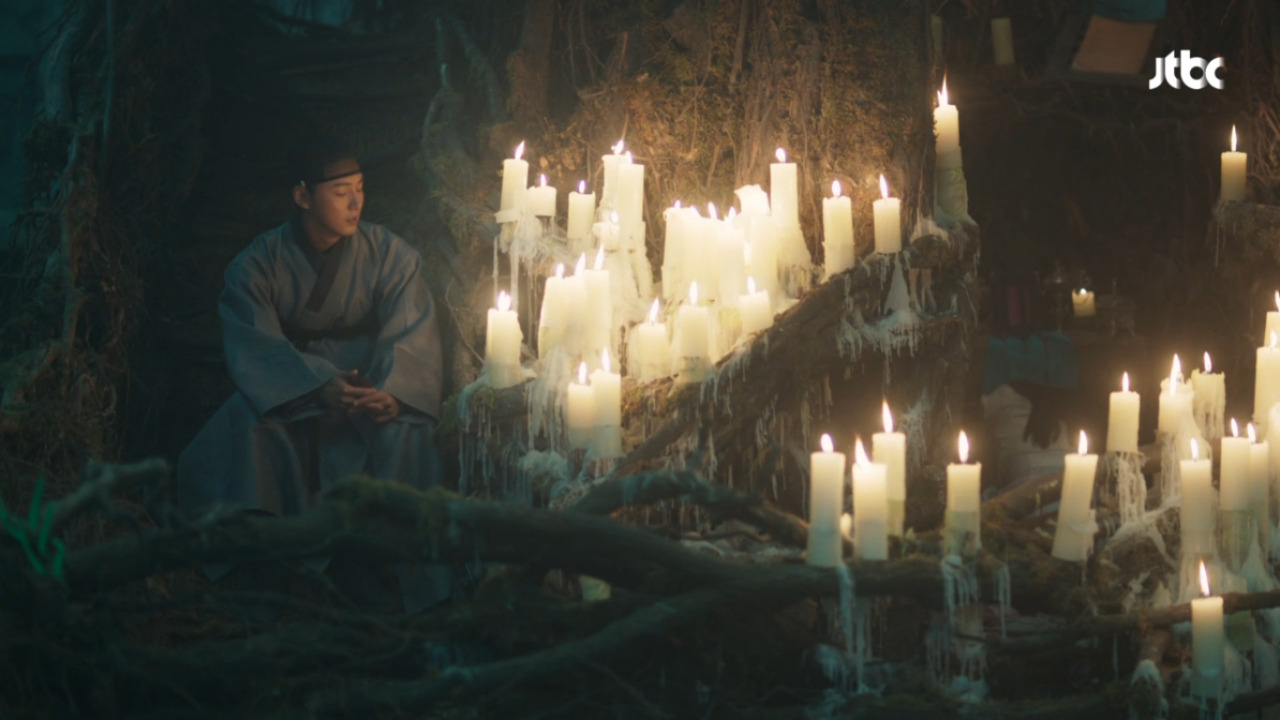

신사임당/ Shin Saimdang (1504-1551)
Shin Saimdang, a Korean artist, writer calligrapher and poet, was born and raised in Gangneung (East Coast of South Korea) at the home of her maternal grandparents. She was the second child of five daughters. Her grandfather taught her as he would have taught a grandson. Being raised in that atmosphere, Shin Saimdang received an education that was not common for women of that era.
Since her childhood, she was gifted at writing and drawing, earning praise from others. Although she was a woman, she had abundant knowledge of Neo-Confucianism, history, and literature, which surprised her father's visitors. Saimdang and her four sisters were all educated equally but Saimdang was especially talented, earning her father's favour. Besides literature and poetry, she was adept at embroidery, painting, and calligraphy.
Unfortunately, not much of her calligraphy remains, but her style was greatly praised in her time, with high-ranking officials and connoisseurs writing records of her work. The scholar Eo Sukgwon mentioned in his book Paegwan Japgi ("The Storyteller's Miscellany") that Saimdang's paintings of grapes and landscapes compared to those of the notable artist Ahn Gyeon. In 1868, upon admiring the work of Saimdang, the governor of Gangneung remarked that "Saimdang's calligraphy is thoughtfully written, with nobility and elegance, serenity and purity, filled with the lady's virtue".
 Shin Saimdang is the first woman to appear on a South Korean banknote. The 50,000 won note, first issued in June 2009, depicts a portrait of Shin Saimdang and her drawings, Mook Grapes and Chochungdosubyeong on the front and paintings 'wolmaedo' and 'pungjugdo' are illustrated on the back side. On May 5, the Bank of Korea announced that they selected Shin Saimdang as the face of the 50,000 won note because she is "a representative female artist in the middle of the Joseon period" and "a person who has accomplished a remarkable achievement in gifted education by fulfilling her role as an educator, a wife and a mother."
Shin Saimdang is the first woman to appear on a South Korean banknote. The 50,000 won note, first issued in June 2009, depicts a portrait of Shin Saimdang and her drawings, Mook Grapes and Chochungdosubyeong on the front and paintings 'wolmaedo' and 'pungjugdo' are illustrated on the back side. On May 5, the Bank of Korea announced that they selected Shin Saimdang as the face of the 50,000 won note because she is "a representative female artist in the middle of the Joseon period" and "a person who has accomplished a remarkable achievement in gifted education by fulfilling her role as an educator, a wife and a mother."
Paintings | ||
|---|---|---|
 |  |  |
In Popular Culture/ On Screen Portrayal
Lee Young Ae and Park Hye Soo in Saimdang, Memoir of Colors (2017)

This is the story of Seo Ji Yoon, a Korean art history lecturer who discovers the long-lost diary of a historical figure, unravelling the secret behind a recently uncovered, mysterious ancient painting as well as a look into the extraordinary life led by Shin Saimdang, a renowned poet-artist in the Joseon era. With beautiful cinematography, this drama is an equally beautiful tribute to Shin Saimdang, who with swift strokes of her paintbrush, spread colours into Korea's history and culture forever.
Park Hye Soo portrays the young Shin Saimdang, a carefree and mischievous girl who quickly gains a reputation as a talented artist yet notoriously daring girl, going as far as climbing walls to sneak into other people's houses. She is depicted as the epitome of youthful joy.
Lee Young Ae portrays both Seo Ji Yoon and the adult Shin Saimdang, an artist in her prime and a loving mother of four. She is smart and resourceful and knows how to make the best out of unfortunate situations. A benevolent person with a forgiving nature, Saimdang is the prime example of wit, bravery and patience accumulated into one soul.



장영실/ Jang Yeong Sil (1390-1443)
Jang Yeong Sil was a Korean engineer, scientist and inventor during the  Joseon dynasty. Although Jang was born as a peasant, King Sejong's new policy of breaking class barriers placed on the national civil service allowed Jang to work at the royal palace.
Joseon dynasty. Although Jang was born as a peasant, King Sejong's new policy of breaking class barriers placed on the national civil service allowed Jang to work at the royal palace.
Jang's name has been synonymous with firsts. His numerous inventions, such as the Cheugugi (the rain gauge), the water gauge, and the celestial globe which measured astronomical objects to name a few, highlight the technological advancements of the Joseon dynasty.
When King Sejong learned of reports that Korean melee weapons were duller and somewhat heavier than those of the neighbouring countries, he sent Jang to Gyeongsang province, to develop metal alloys for various weapons and tools. Since Jang used to be a gwanno, a man-slave in government employment, he had already acquired much knowledge about metal working and also knew the geography of the area. Jang surveyed the available metals and their characteristics, and presented his research to the king and the generals, contributing to the development of Korean weaponry.
In Popular Culture/ On Screen Portrayals
Jang Yeong Sil's life has been portrayed time and again across various media. A fitting tribute to the nation's greatest inventor.
- Portrayed by Lee Chun Hee in the drama King Sejong the Great. (2008)
- Portrayed by Im Hyung Joon in the film I Am the King. (2012)
- Portrayed by Kim Seul Gi in the drama special Splash Splash Love. (2015)
Song Il Gook in Jang Yeong Sil (2016)

This biographical drama tells the story of Jang Yeon Sil's journey from a slave boy to the greatest inventor in all of Joseon dynasty.
Song Il Gook remarkably portrays the character of Jang Yeong Sil, a man with profound intelligence and an equally admirable personality, whose passion for astronomy allows him to rise above all competition and establish himself as the uncontested and unbeatable man of science in King Sejong's court, gaining respect and admiration, while battling adversity from all fronts for his humble ancestry.


김이사부 / Kim Isabu

Kim Isabu was a military general and politician of Silla during the 6th century. During the reign of King Jijeung, Isabu was first appointed as the governor of Siljik province, modern-day Samcheok. Then, he was appointed as a governor of Haseulla, which is modern-day Gangwon. This was when Silla, including its inland regions, was frequently exposed to the piracy of the Usanguk people. Due to the harsh geographical condition of Usanguk, its people believed that Silla would not invade its island.
Regardless, Isabu decided to subjugate the island nation, and in order to overcome these geographical obstacles, he came up with an idea to trick the people of Usanguk into surrendering. He made large wooden lions and loaded them on battleships. He threatened the people of Usanguk, saying that he would release the lions if they don’t surrender. Eventually, his trick worked and the people of Usanguk surrendered. Thanks to Isabu, Usanguk was subjugated to Silla in 512.
Isabu further expanded Silla’s territory after gaining supreme military power in 541, as far as former Baekje and Goguryeo territory that reached far north of present-day Hamgyong. Isabu also subjugated Daegaya that put an end to Gaya confederacy and thus, consolidated Silla’s power on the southeastern part of Korea.
A flagship research ship of South Korea, Isabu, is named after him.
In Popular Culture/ On Screen Portrayal
Park Seo Joon in Hwarang: The Poet Warrior Youth (2016)

The drama, set in the turbulent and tumultuous times of the Silla kingdom, tells the story of the Hwarang, a group of young elite men who were trained in combat to become warriors and cut across the existing power factions, while remaining loyal to their future king, Sammaekjong, who unbeknownst to them, is a fellow Hwarang. Despite elements of history being woven into the storyline, the drama itself is majorly fictional.
Park Seo Joon portrays the character of Moo Myung, a young man of low birth who rises above his situation in life to become a legendary Hwarang warrior. He assumes the identity of his best friend Kim Sun Woo, after he is killed by one of the Queen Dowager's men. His association with the Hwarang allows him to gain strength and leadership ability in the process and he later becomes the great general Kim Isabu.
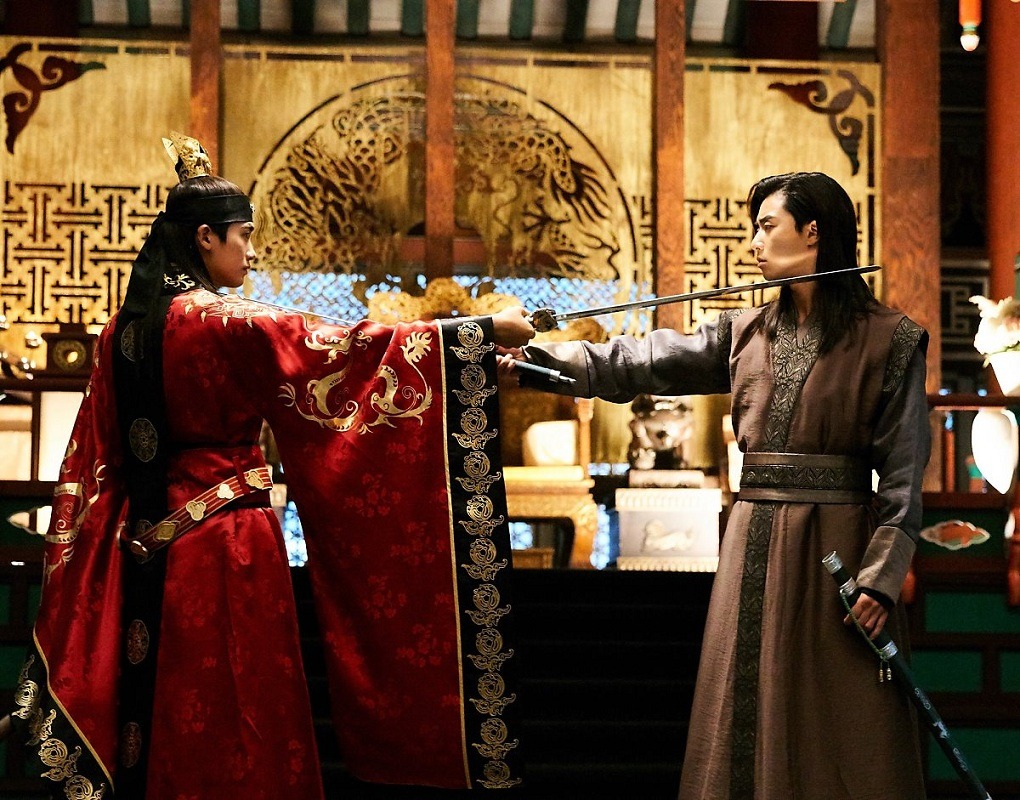

명성황후/ Empress Myeongseong (1851-1895) (T. 1866-1895)
 Empress Myeongseong, also known as Queen Min, was the wife of Gojong of Korea, the first emperor of Korea and the 26th king of Joseon. She is also the first Queen to rule alongside her husband in Korea. Empress Myeongseong was very influential during the time when the first Sino-Japanese War occurred.
Empress Myeongseong, also known as Queen Min, was the wife of Gojong of Korea, the first emperor of Korea and the 26th king of Joseon. She is also the first Queen to rule alongside her husband in Korea. Empress Myeongseong was very influential during the time when the first Sino-Japanese War occurred.
She worked hard to rapidly modernize Korea by sending people to study in China, Japan and the US in order to learn from these countries and return to implement their methods in Korea. She also created strong ties to Russia in order to ward off attacks from Japan. Surprisingly, she was more politically involved and dedicated to the welfare of the state than her husband.
Empress Myeongseong encouraged religious freedom, education for girls and helped stabilize the economy and modernize the military. She was very influential, talented, intelligent and goal-oriented. She achieved much during her time as Empress, a position few would have thought could surpass the Emperor's.
In Popular Culture/ On Screen Portrayals
In South Korea, there has been renewed interest in Empress Myeongseong due to popular novels, a film, a TV drama and even a musical based on her life story.
- Portrayed by Moon Geun Young, Lee Mi Yeon and Choi Myung Gil in the drama Empress Myeongseong. (2001-2002)
- Portrayed by Seo Yi Sook in the drama Jejungwon. (2010)
- Portrayed by Ha Ji Eun in the drama Gunman in Joseon. (2014)
- The Last Empress (Musical)
Soo Ae in The Sword with No Name (2009)

This film tells the fictional story of Mumyeong, a bounty hunter during the Joseon Dynasty whose life is changed forever when he encounters a beautiful woman named Min Jayoung, (soon to be Empress Myeongseong) and falls in love with her. He joins the royal guard in order to protect and be close to the Empress, as threats to her life begin to rise with her rapid modernization of the country.
Soo Ae portrays the character of Empress  Myeongseong, a great leader and visionary woman, who tries to modernize the dynasty by breaking it off from its hermit kingdom past while avoiding being colonized by Russia and Japan. She becomes embroiled in a political power struggle with the court's conservative Confucian faction, led by her own father-in-law, the regent Daewongun. Despite adversity from all fronts, she remains steadfast in her aims and perseveres to see them in fruition.
Myeongseong, a great leader and visionary woman, who tries to modernize the dynasty by breaking it off from its hermit kingdom past while avoiding being colonized by Russia and Japan. She becomes embroiled in a political power struggle with the court's conservative Confucian faction, led by her own father-in-law, the regent Daewongun. Despite adversity from all fronts, she remains steadfast in her aims and perseveres to see them in fruition.

광개토태왕/ King Gwanggaeto the Great (374-413) (R. 391-413)
 King Gwanggaeto was the nineteenth monarch of Goguryeo. He is the only Emperor beside King Sejong to be awarded the title of 'The Great'. He is occasionally recorded as Yeongnak Taewang ("Supreme King"). Gwanggaeto's imperial reign title meant that Goguryeo was on equal standing as an empire with the imperial dynasties in China.
King Gwanggaeto was the nineteenth monarch of Goguryeo. He is the only Emperor beside King Sejong to be awarded the title of 'The Great'. He is occasionally recorded as Yeongnak Taewang ("Supreme King"). Gwanggaeto's imperial reign title meant that Goguryeo was on equal standing as an empire with the imperial dynasties in China.
Under Gwanggaeto, Goguryeo began a golden age, becoming a powerful empire and one of the great powers in East Asia. Gwanggaeto made enormous advances and conquests into: Western Manchuria against Khitan tribes; Inner Mongolia and the Maritime Province of Russia against numerous nations and tribes; and the Han River valley in central Korea to control over two-thirds of the Korean peninsula.
Gwanggaeto's accomplishments are recorded on the Gwanggaeto Stele, erected in 414 at the supposed site of his tomb in Ji'an along present-day China-North Korea border. Constructed by his son and successor Jangsu, the monument to Gwanggaeto the Great is the largest engraved stele in the world.
In Popular Culture/ On Screen Portrayals
Gwanggaeto the Great has been depicted across a wide range of media. Many novels, comics, and games featuring him have been released in Korea. The popular and award-winning Korean mobile game Hero for Kakao features Gwanggaeto as a playable character, while Age of Empires: World Domination, a mobile game produced in collaboration with series owner Microsoft, includes him as an electable hero of the Korean civilization.
Yoo Seung Ho and Bae Yong Joon in The Legend (2007)

The drama tells the story of Damdeok, the prince of Goguryeo and his ascent to the throne as Gwanggaeto the Great, a brilliant ruler, general and strategist who revolutionized Goguryeo.
Yoo Seung Ho portrays the character of young Damdeok, a pleasant and well-mannered young man, who suffers in his heart due to a tragedy that results in him being the culprit.
Bae Yong Joon portrays the character of Damdeok the Emperor Gwanggaeto, who is told to hide his combat abilities out of fear that he may not survive long enough to ascend the throne. However, he refuses to hide in the shadows and instead chooses to showcase his full potential as a brilliant general, strategist and schemer.
Lee Tae Gon in Gwanggaeto, The Great Conqueror (2011-2012)

The drama tells the story of Prince Damdeok, who after his father's death, rises to the throne and vows to restore Goguryeo to its former glory. His struggle for which later forms the basis of a popular Korean legend.
Lee Tae Gon portrays the character of Prince Damdeok, (later King Gwanggaeto) a strong-willed, brave man whose strength knows no limits and whose intelligence is second to none. He proves that the title of Supreme Ruler was tailored for him and there's no one his equal in all of Goguryeo.

















